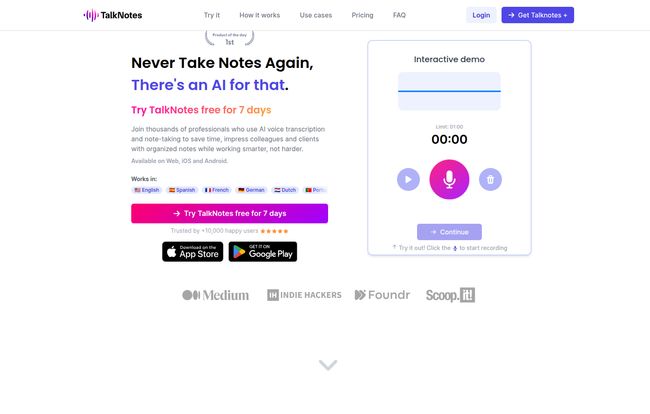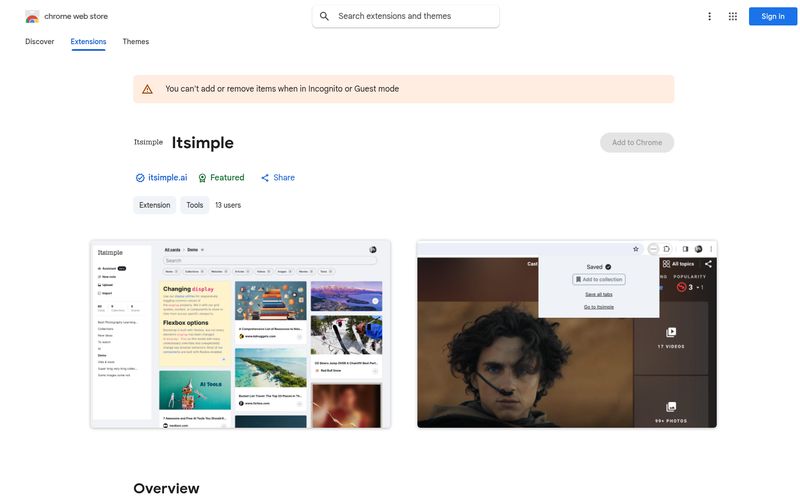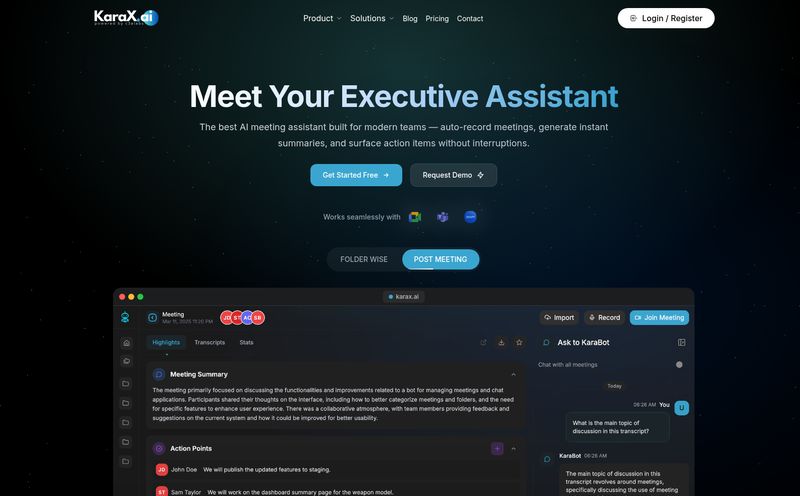How many of you have a voice memo app filled with random, half-baked ideas, mumbled reminders, and that one stroke of genius you had at 2 AM that now sounds like a grocery list spoken by a ghost? Yeah, me too. My phone is a graveyard of good intentions. For years, the process has been the same: capture the fleeting thought, promise to listen to it later, and then… never listen to it later.
The friction is just too high. Finding the right memo, scrubbing through my own ums and ahs, and then typing it out? I’d rather just forget the idea, thanks. It’s a productivity black hole.
So, when I kept seeing chatter about an app called Talknotes, which claims to turn your rambling voice notes into clean, structured text, my inner SEO-and-productivity-nerd sat up straight. An AI that not only transcribes but also organizes your thoughts? It sounded a bit like magic. I had to see if it was the real deal or just another over-hyped app destined for my digital junk drawer. So I signed up for the trial and took it for a spin.
So, What Is Talknotes, Really?
At its core, Talknotes is an AI-powered voice-to-text app. But calling it just a transcriber feels like calling a Ferrari just “a car.” It doesn’t quite capture the spirit of the thing. It’s more of a thought processor. You talk, it listens, and then it hands you back not just what you said, but what you meant to say, all tidied up.
Imagine you're driving and have a brilliant idea for a blog post. Instead of trying to type it out (don't do that), you just open Talknotes and ramble for three minutes.
"Okay so the new blog post idea is about... uhm... AI in content creation, and I want to cover the pros and cons, you know, the good stuff like speed and idea generation but also the bad stuff... like, it can sound robotic. And maybe I should start with an anecdote about... my old workflow. Yeah, that's good. And then add a section on tools, like Jasper and maybe Talknotes itself, haha. And I need a conclusion that’s optimistic but realistic.”
Normally, that's a mess to deal with later. With Talknotes, you hit stop, select the “Blog Post” style, and a few seconds later it gives you a structured outline, complete with headings and bullet points. It’s less of a tape recorder and more of a thought-alchemist, turning your leaden ramblings into structured, golden text.

Visit Talknotes
Putting It Through Its Paces: The Core Experience
The whole process is refreshingly simple. So simple, in fact, that it feels almost too easy. It boils down to three steps:
- Record & Speak: You hit the big button and talk. You can also upload existing audio files, which is a neat touch.
- Choose Your Style: This is where the magic happens. You’re not just getting a transcript. You're choosing the format of the output. An email? A meeting summary? A tweet thread? There are over 100 premade styles to pick from.
- Edit & Export: The AI-generated text appears, and you can quickly clean up any minor errors or tweak the tone before exporting it as text, PDF, Markdown or sharing it directly.
My first try was genuinely a “whoa” moment. The transcription accuracy was impressive, even with my tendency to mumble when I’m thinking. It stripped out the filler words and gave me something immediately usable.
The Standout Features That Actually Move the Needle
A lot of apps are packed with features that look good on paper but you never actually use. With Talknotes, a few things really stood out in my daily workflow.
The 'Styles' Are the Secret Sauce
This is the killer feature. The transcription is great, but the automatic structuring is what saves the real time. Turning a 5-minute brain dump into a perfectly formatted to-do list, or a professional-sounding email, is a legitimate productivity hack. I found myself using it to draft replies to client emails while walking the dog. It felt like I’d hired a very efficient, very fast personal assistant who lives in my pocket.
It's a Polyglot
The app supports over 50 languages. As someone who works with international clients, this is a huge plus. Being able to get a quick summary of a voicemail left in Spanish or French without having to run it through a clunky separate translator is fantastic. This makes it a great tool for global teams and multilingual individuals.
Integrations Bring It All Together
On its own, Talknotes is cool. Connected to your other tools, it's powerful. With Zapier and Webhook support, you can create some slick automations. For instance, you could set it up so that any voice note you tag as a “task” automatically creates a new card in Trello or a new entry in your Google Calendar. This is how you start building a truly automated workflow and claw back hours in your week.
The Investment: What Does Talknotes Cost?
Okay, let's talk money. Talknotes isn't free, and for some, a subscription for a note-taking app might seem like a stretch. But I think that's the wrong way to look at it. You’re not paying for notes; you're paying for time and mental clarity. There's a 7-day free trial to see if it clicks for you, and then two main plans.
| Plan | Price | What You Get |
|---|---|---|
| Monthly | $19.97 / month | Unlimited notes, file uploads, custom styles, all export options. |
| Yearly | $197 / year (works out to ~$16/month) | Same features as monthly, but with a discount for paying upfront. |
Is it worth it? If you're a content creator, a founder, a student, or any professional who bills by the hour, the math is pretty simple. If this app saves you even 2-3 hours a month (and I'd argue it saves more), it has already paid for itself.
Let's Be Real: The Not-So-Perfect Parts
No tool is perfect, and it's important to go in with open eyes. I did run into a few things that might be deal-breakers for some people.
First, the audio is deleted after transcription. This is a big one. The company frames this as a privacy feature—your raw audio isn't sitting on their servers forever. I get that, and I actually appreciate the sentiment. But if you're a journalist, podcaster, or anyone who needs to keep an archival copy of the source audio, this is a problem. You'd need a separate recording process. For my use case of quick notes and drafts, it's fine, but its something you need to know.
Second, it obviously requires an internet connection. This is pretty standard for any AI tool, but if you were hoping to transcribe thoughts on a long flight or a subway commute, you're out of luck until you're back online.
Finally, while the accuracy is very, very good, it's not infallible. Heavy accents, significant background noise, or speaking too quickly can trip it up. You still need to give the output a quick proofread. Don't just blindly copy-paste a transcription into a critical client email.
My Final Take: Is Talknotes a Keeper?
After a couple of weeks of using it, Talknotes has earned a permanent spot on my homescreen. It has successfully bridged the gap between a thought and an action. It's removed the friction that kept all those brilliant (and not-so-brilliant) ideas trapped in my voice memo app.
It's not for everyone. If you need legally certified transcripts or need to keep your source audio, you'll have to look elsewhere. But for the busy professional, the prolific creator, the student drowning in lecture notes, or just anyone whose brain moves faster than their thumbs? Talknotes feels less like a tool and more like an extension of your own mind. It’s one of those rare apps that delivers on its promise and genuinely makes your day-to-day work a little bit easier. And in this industry, that's worth its weight in gold.
Frequently Asked Questions About Talknotes
- Is Talknotes free to use?
- Talknotes offers a 7-day free trial so you can test all its features. After the trial period, you'll need to subscribe to either the monthly or yearly plan to continue using it.
- How accurate is the voice-to-text transcription?
- The app claims up to 99% accuracy, and in my experience, it's very high for clear speech. However, accuracy can decrease with heavy background noise, strong accents, or very fast, mumbled speech. A quick proofread is always a good idea.
- What happens to my audio recordings?
- For privacy, Talknotes automatically deletes your audio files from their servers immediately after the transcription is complete. The text is saved, but the original audio is gone.
- Can I upload an existing audio file?
- Yes, you can upload existing audio files for transcription and structuring, which is great for processing past recordings, lectures, or interviews.
- What happens if I cancel my subscription?
- If you cancel, you'll be able to use the service until the end of your current billing period. You should make sure to export any notes you want to keep before your subscription fully expires.



